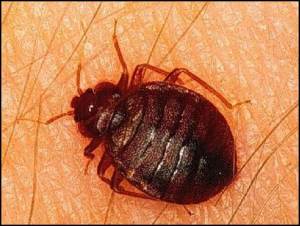Preparing for a bed bug job is a task on its own. Let’s start with the amount of hours spent training technicians prior to any job, then the equipment, and even contract modifications or the creation of a specialized new one. How many hours would you say you need to train your top-tier and key employees to maintain quality and safety–30, 50 or even 100 hours?
Next is the selection of products to use: residual insecticides, dust, vacuums, to heat or not, whole house fumigations and sub contracting, and last (for this article) aerosols. There are so many to choose from. Opinions are all over the map on what works, what’s best, and what failed. What matters is what works for you and your customer, right?
Let’s take a moment to review the perspective of a technician doing bed bug work:
1) It better work
2) It better work fast
3) I better not get a call back!
Now let’s review from a Manager or Owner’s perspective:
1) More label training
2) What if it doesn’t work/waste of time
3) How long is the residual
4) What are the active ingredients
5) What’s the signal word
6) Is it labeled to spray all over the mattresses
7) What is the risk of misapplication and violations with techs
8) Is it cost effective?
I know there’s much to add to these two lists, but these are the nuts and bolts.
J.T. Eaton’s Kills Bed Bugs Plus #217P aerosol answers these questions and more.
There is no resistance to active ingredient Pyrethrin, and the synthetic of Pyrethrin is Permethrin, which offers a great knock- down and residual protection. The Piperonyl Butoxide at .75% makes the product even more effective, and combines well with these two active ingredients for increased results. Both ingredients bind to proteins in the insect’s nerves called the voltage-gated sodium channel. That said, if you use our crack and crevice tip in the professional version, it foams! This encapsulates the bed bugs and fills the all parts of void where the insect rest; therefore more of the product touches the bed bugs. It’s easy to apply and yields instant and long-lasting results.
From the Manager’s or Owner’s perspective, here are the answers:
1) A product that foams means less room for mistakes and more of the crack is treated
2) You’ve already used these active ingredients with plenty of success for fleas, ticks and roaches (no surprise here) so you know they work
3) We have 12 weeks residual on our label, and independent testing yielded 32 days to knock down half the population
4) See above for active ingredients
5) “Caution” is the signal word
6) It’s labeled to “spray until damp” for mattresses
7) It’s labeled for roaches, ants and dust mites–can you spray residential kitchens with your current products? What about carpets and shoes or items that can’t normally be laundered? This helps avoid misapplication
8) Priced lower than the major brands on the market!
We launched this made-in-America product for industry professionals at an extremely reasonable price. There are no “Silver Bullets” with bed bug products or equipment, but I assure you, we do have control of the “gun powder and the aim”!
James Rodriguez, Territory Manager
J.T. Eaton Co., Inc.

Leave a comment